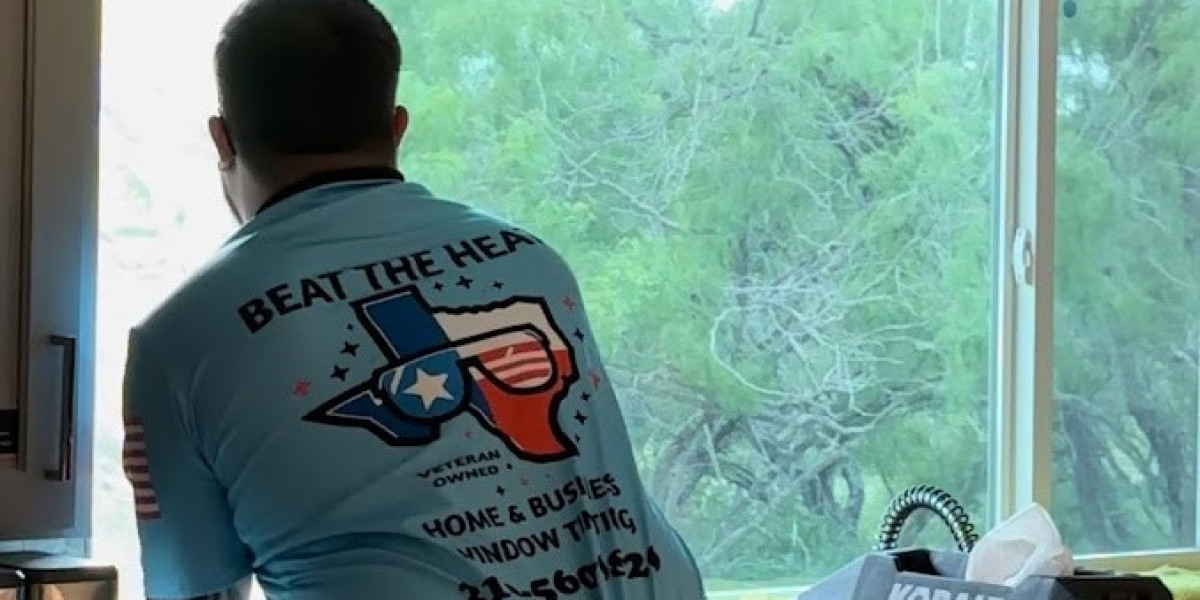Home window tinting has become an essential consideration for homeowners in San Antonio, particularly given the city's hot and sunny climate. With rising energy costs and an increasing awareness of the benefits of window tinting, many are faced with the decision of whether to tackle this project themselves or hire a professional. This article will delve into the pros and cons of DIY versus professional window tinting, providing you with the essential knowledge to make an informed decision. We will examine the costs, benefits, and potential pitfalls of both approaches, ensuring you know exactly what to expect as you consider enhancing your home's energy efficiency and aesthetic appeal.
Understanding Home Window Tinting
Window tinting involves applying a thin film to the surface of glass windows, which can significantly reduce heat and glare while providing privacy and UV protection. In San Antonio, where temperatures frequently soar, window tinting can lead to substantial energy savings by keeping your home cooler and reducing the workload on your air conditioning system. Furthermore, window tints come in various styles and shades, allowing homeowners to customize the look of their homes while benefiting from improved energy efficiency. According to the Department of Energy, window film can reduce heat gain by up to 70%, making it a worthwhile investment for many homeowners.
DIY Window Tinting: Pros and Cons
One of the main advantages of DIY window tinting is cost savings. Homeowners can purchase window tint film for as little as $10 to $50 per roll, depending on the quality and type of film. For those with a DIY spirit, the process can be a rewarding project that requires minimal tools and skills. Moreover, with the plethora of online tutorials and guides available, it has become easier than ever for homeowners to learn the techniques necessary for a successful installation. However, DIY window tinting does come with its challenges. Achieving a professional-looking finish often requires a steady hand and precise application, which may be difficult for some. Additionally, improper installation can lead to bubbles, peeling, or even damage to the windows, potentially costing more to rectify than hiring a professional in the first place.
Professional Window Tinting: Pros and Cons
When opting for professional window tinting services in San Antonio, homeowners can expect a higher upfront cost, typically ranging from $300 to $800 for an average home. However, this investment often pays off in the long run due to the quality and longevity of the installation. Professionals bring experience and expertise to the table, ensuring that the tint is applied correctly and uniformly. They also have access to higher-quality materials that may not be available to the average consumer. Furthermore, many professional services offer warranties, providing peace of mind in case of any issues post-installation. On the downside, the cost can be a significant factor for budget-conscious homeowners, and there may be a wait time for scheduling an appointment with a reputable service provider.
Cost Comparison: DIY vs Professional
When considering the costs associated with window tinting, it’s essential to compare the expenses of DIY and professional options. DIY window tinting can initially seem appealing due to the lower material costs. However, it’s important to factor in the potential costs of mistakes. For example, if a homeowner damages their windows or needs to reapply the film due to improper installation, those costs can quickly add up. On the other hand, while professional services may require a higher initial investment, the durability of the installation and the warranty provided often justify the expense. According to industry research, professionally installed window tint can last up to 10 years longer than DIY options, making it a more economical choice over time.
Legal Considerations and Regulations
Before proceeding with window tinting, homeowners in San Antonio should be aware of local regulations regarding window film. Texas law dictates specific requirements for window tinting, particularly concerning visible light transmission (VLT) percentages. For example, residential windows must allow at least 25% of visible light to pass through, while the front windshield may only have tint applied to the top 5 inches. Failure to comply with these regulations can result in fines or the requirement to remove the tint. Professional window tinting companies are typically well-versed in these regulations and can ensure that installations meet legal standards, while DIY enthusiasts must take the initiative to research and adhere to these rules themselves.
Skill Level and Tools Required for DIY
One of the key factors in determining whether to pursue DIY window tinting is the skill level required for a successful installation. While the process may seem straightforward, it requires a steady hand, attention to detail, and patience. Essential tools for DIY window tinting include a utility knife, a squeegee, a measuring tape, and a spray bottle with soapy water. Homeowners must also be comfortable working with adhesives and handling potentially fragile materials. Before diving into the project, it may be beneficial to practice on a smaller window or a less visible area to hone skills. Additionally, understanding the type of film being used and its specific application process is crucial to achieving a satisfactory result.
Long-Term Benefits of Window Tinting
Regardless of whether you choose the DIY route or opt for professional installation, the long-term benefits of window tinting are substantial. In addition to reducing heat and glare, window films can block up to 99% of harmful UV rays, protecting both your skin and your furnishings from fading. This UV protection can significantly extend the life of your carpets, furniture, and artwork. Moreover, many homeowners experience a reduction in energy costs, with some reports suggesting savings of 20% or more on monthly utility bills. These long-term benefits, combined with enhanced comfort and privacy, make window tinting a worthwhile investment for homeowners in San Antonio.
Conclusion: Making the Right Choice for Your Home
In conclusion, the decision between DIY and professional home window tinting in San Antonio depends on several factors, including budget, skill level, and the desired quality of the installation. While DIY offers a cost-effective solution, it comes with risks that could lead to additional expenses. Conversely, professional installation provides peace of mind and a guarantee of quality but at a higher upfront cost. Ultimately, homeowners should weigh the pros and cons of each option and consider their specific needs to make an informed choice that enhances their home's comfort and energy efficiency. No matter which route you choose, window tinting can significantly improve your living space, making it a valuable addition worth considering.



